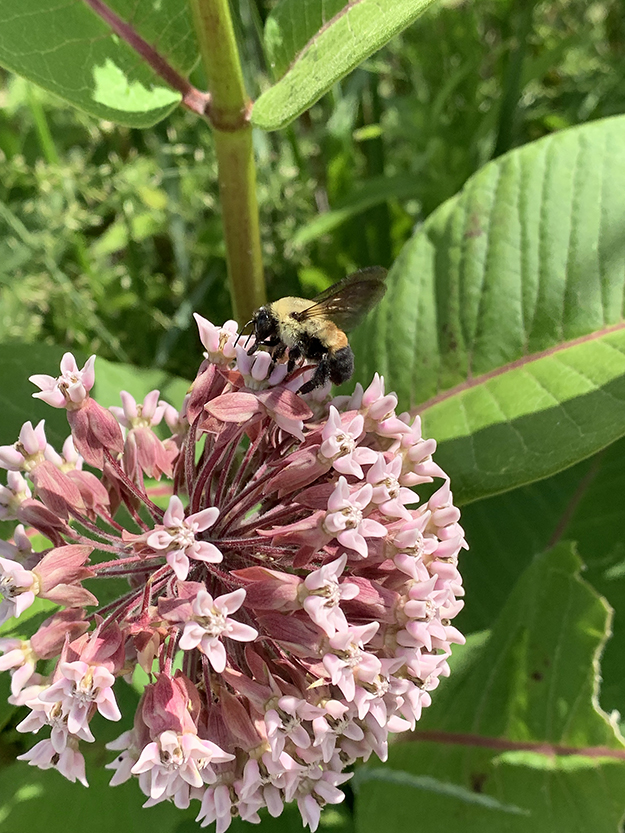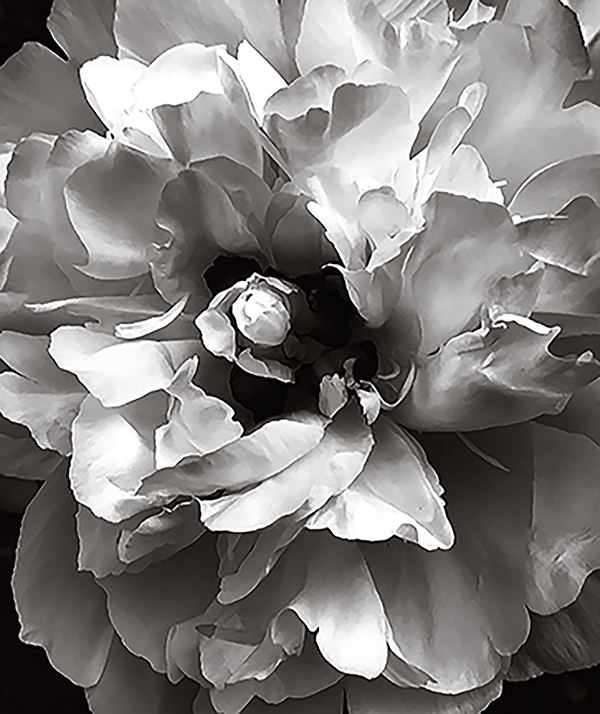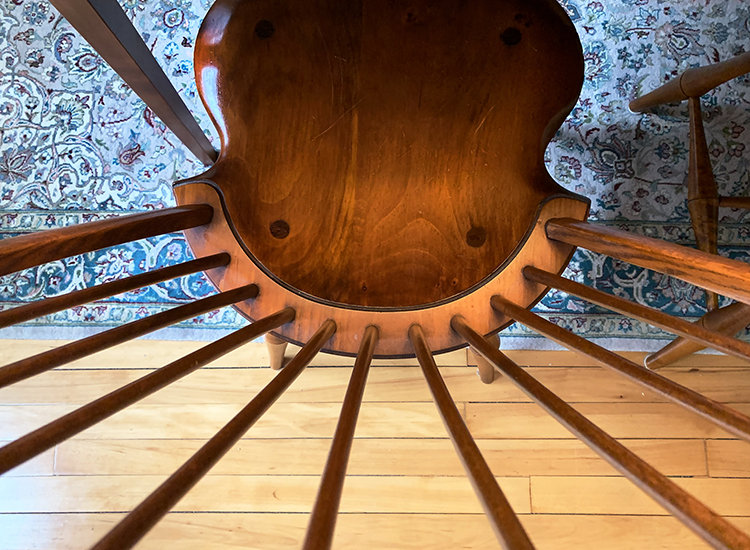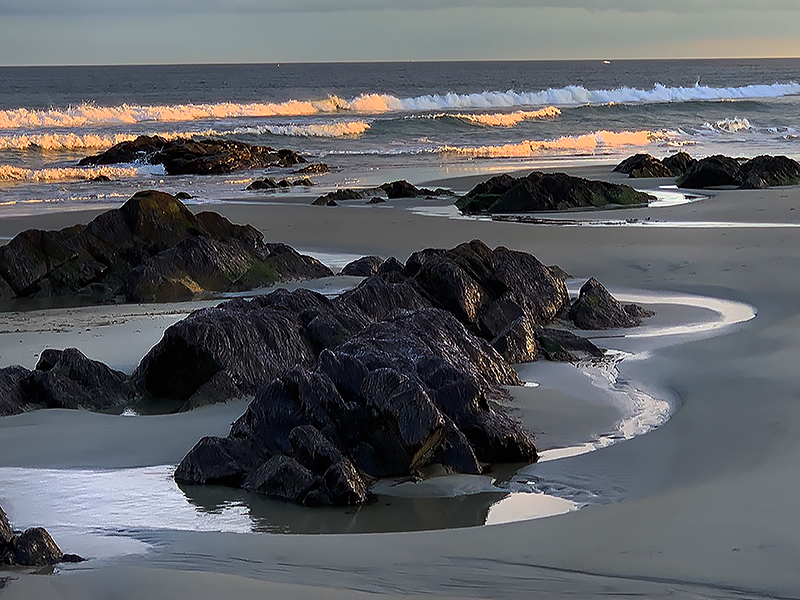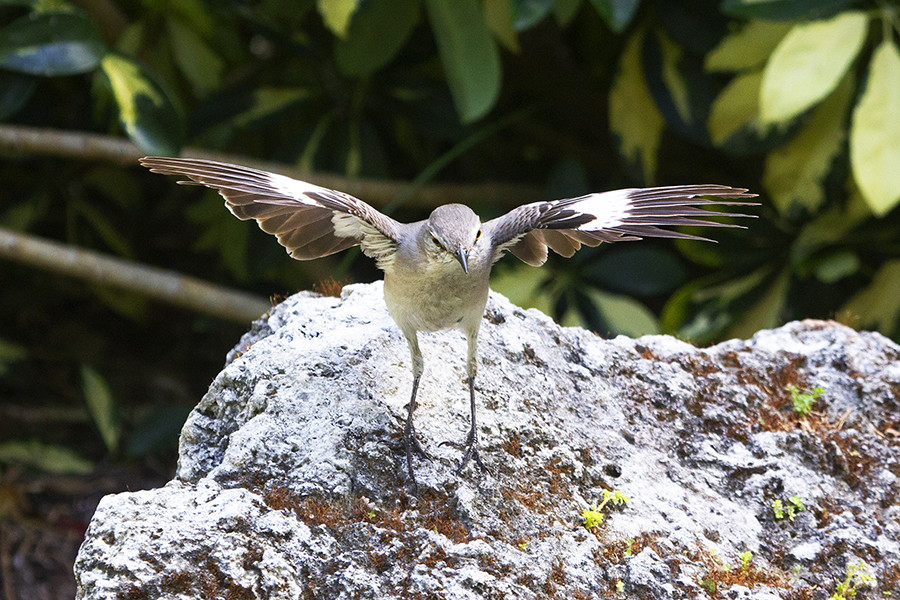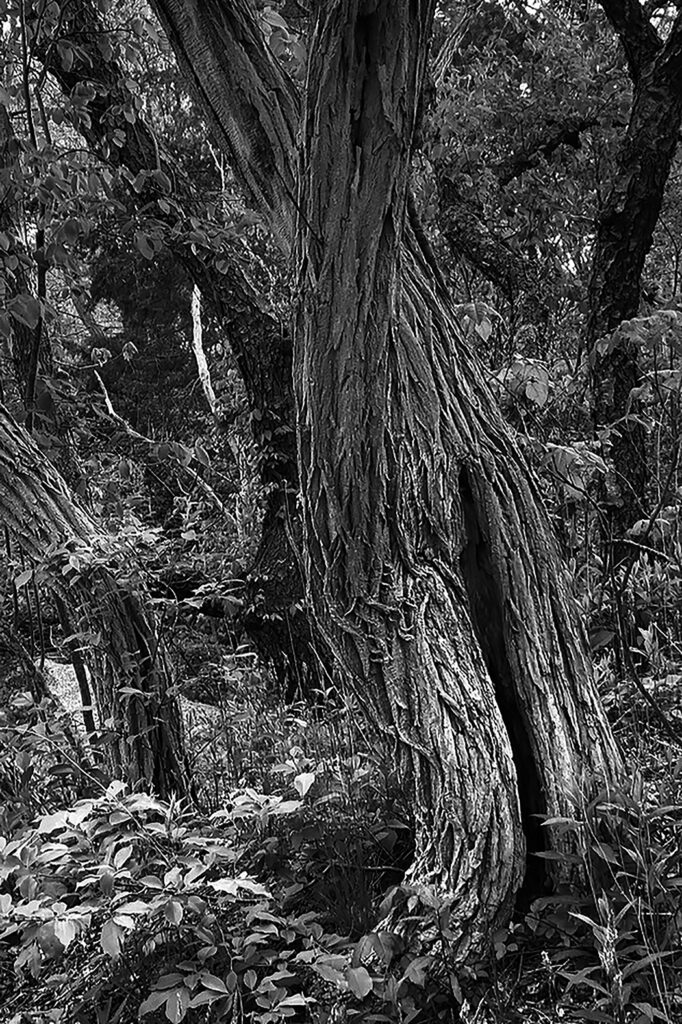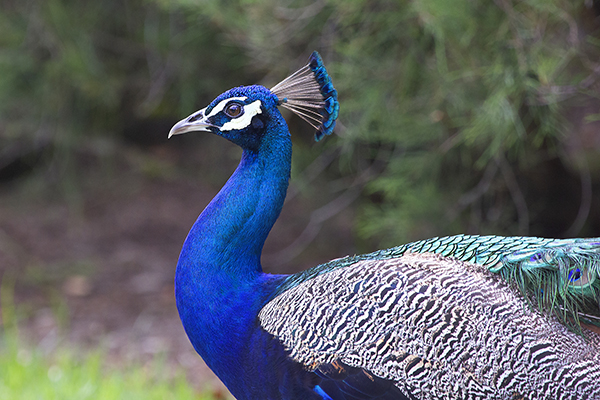Following on yesterday’s theme of flower photography, I offer Figure 1 taken at Great Meadows National Wildlife Refuge of a bumble bee on a milkweed blossom. Bees always add to flower pictures, even if they destroy the symmetry. The iPhone is fabulous for close-up. But you see the problem in both this and yesterday’s image. The sharpness does not hold against reasonable blow-up. It certainly does not rival some of the absolutely glorious work of the macrophotographers whom I follow. I am a firm believer that sharpness is everything. But still a reasonable image if you don’t push it too hard.
Peony
It is early summer and everyone who isn’t photographing themselves is photographing flowers – and, of course, the flowers are beautiful this time of year. Still flower photography has always perplexed me. There ever seems to be something of a cheat in color. I mean the color of flowers can be quite overpowering and modern cameras, the cell-phone prime among them – elevate color to all the vividness that it can possibly possess. Of course, there are people who excel at flower photography. And I admire those who have a natural pastel palette. As for myself, I am always torn between the flower for color’s sake and the flower as a proclaimer of symmetry. I am constantly experimenting with it, and have grown fond of photographing flowers at night by flash where the darkness of the background creates a wonderful emphasis.
Today I decided on the symmetry end of things and processed the glorious peony of Figure 1 in black and white, actually duotone. It was originally white with a touch of red in the center. So it appealed to me as an example of tone-on-tone and what can be created from it.
Windsor
So for today we have the image of Figure 1, entitled “Windsor!” It is both a geometric piece, with that disconcerting table leg in the upper left and also a study in perspective and depth of focus. It was taken on the spur of the moment just for fun image and I oscillated back and forth between doing it in black and white and preserving its color. In the end the contrast between the rich sepia tones of the maple contrasted with the blues of the oriental carpet won out to my eye at least.
When I was a child, I delighted in what my father called his “Captain’s Chair.” so perhaps the fascination has lasted all these years.
Piping Plovers
On the Massachusetts North Shore the piping plovers (Charadrius melodus). These little tiny ring necked plovers are seriously endangered and, as a result, most of the Parker River National Wildlife Refuge beaches are closed so that they can breed undisturbed for about half the summer. It is worth it! TC and I have noticed a few of these delights at Cape Hedge Beach and last Saturday we were treated to encountering three day-old hatchlings darting about, tripping over rocks, and generally presenting a major challenge to parent birds to keep them all together – so delicate and vulnerable. Most wonderful of all is the way that they hide under their parents; all you see is a ball of fluffy feathers and a lot of legs. It is very reminiscent of the character Mother Ginger from the ballet Nutcracker, who hides a mass of children beneath her skirt.
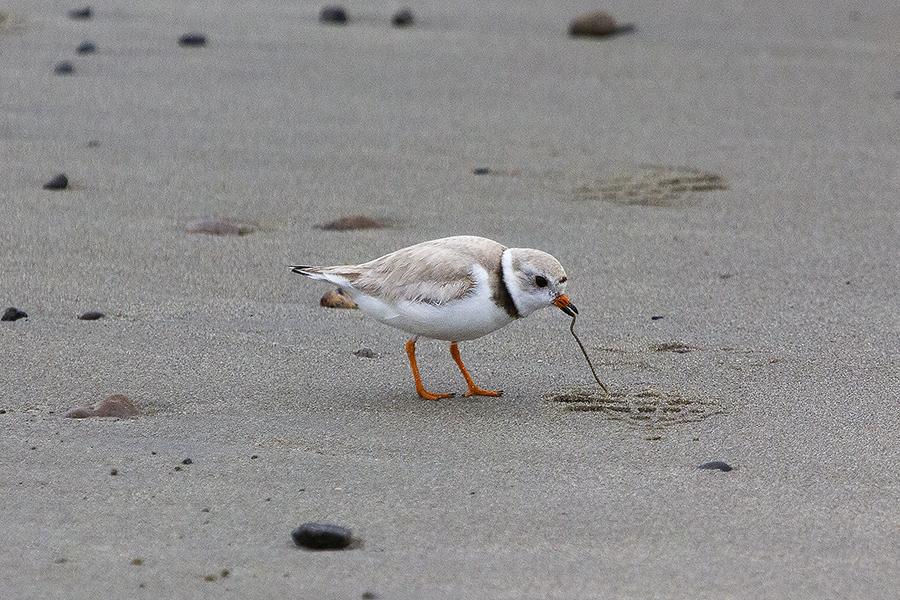
I was very respectful of these little babies and in the end did not get a good picture of them. I did however succeed in getting the image of an adult piping plover (Figure 1), which I am quite pleased with.compensation.
Canon T2i withEF 100-400 mm f/4.5-5.6 L IS USM lens at 340 mm ISO 1600 Aperture Priority AE Mode 1/4000 th sec at f/7.1 with no exposure compensation.
Cape Hedge – low tide at sunset
I keep coming back to Cape Hedge in Rockport, MA. It inspires me. It delights and centers me. Here (Figure 1) is an image that I took in April at sunset and low tide: of the beach, the sunlit waves, the algae covered rocks, and the swirls of tidal water. I’ll let the image speak for itself, except to say that it could have been taken anywhere during the last billion years! So anxious to return!
Angry Mockingbird
One night, when I was in Key Biscayne, I heard a beautiful bird call and looked about to see what it was. My explorations were greeted by the very angry and aggressive mocking bird (Mimus polyglottos) of Figure 1. The species name polyglottos really says it all. This bird imitates other bird calls. And the term mocking may already indicate a bit of attitude. Although this one was clearly protecting its nest.
Whenever I see or hear a mockingbird, I am reminded of a school play, which we did in elementary school, about Abraham Lincoln. “Listen to the Mocking Bird” (1855). The song was a popular American song that we were told was one of Abraham Lincoln’s favorites. Its lyrics were composed by Septimus Winner under the pseudonym “Alice Hawthorne”, and its music was by Richard Milburn. Funny the way that you remember odd things.
I believe that I played Andrew Johnson and I had only one line, which I delivered with great force and energy, “No comment!” One of my classmates had a smaller part. He played Lincoln’s statue and he unfortunately passed out during the performance. Oh the indignities of youth!
Canon T2i with EF 100-400mm F/4.5-5.6 L IS USM lens at at 210 mm, ISO 1600, 1/4o0th sec at f/7.1 with no exposure compensation.
Shagbark Hickory
Another point that I learned from Ansel Adams is that a photograph of a single tree, especially in context, could be as beautiful and dramatic as a wide vista of mountains. It is a form of intimate landscape. Figure 1 is my attempt at such an image. And this time – no toning! Sometimes just black and white tells the whole story. Here the story is meant to be the a combination of the texture and the shape. You can see the failing of the small camera format in the not quite there sharpness. But I loved the scene and I loved the subject. Loving a tree? Somewhere in all of this is the recurrent meme of the sixties and seventies, Tolkein’s legend of the Ents.
And this points to another technological marvel. The photograph was not taken with my Canon T2i but with my iPhone.
Mission accomplished
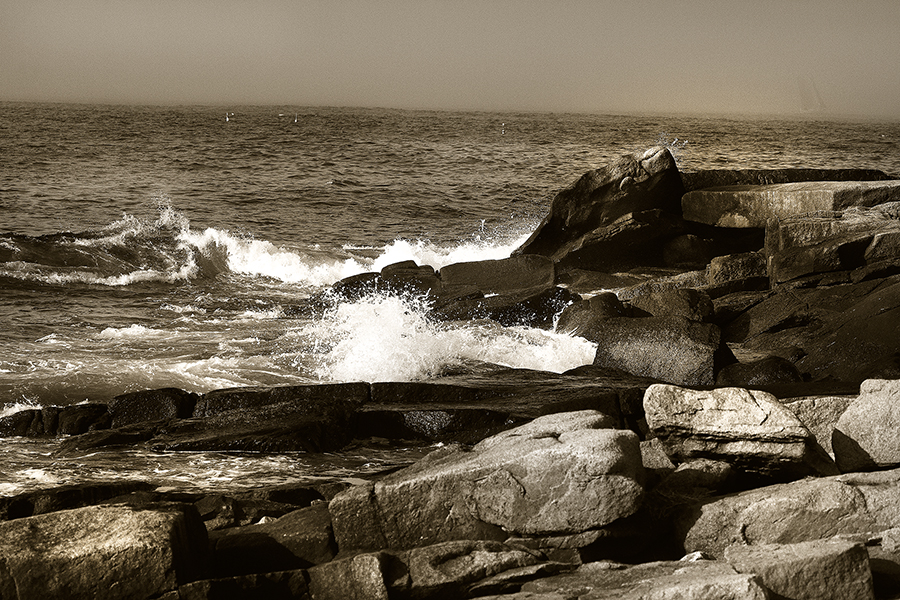
I was standing near sunset this past Saturday at Halibut Point State Park in Gloucester, MA photographing the pounding surf against the beach, and the scene struck me as a kind of “mission accomplished moment.” When I was in high school and college we seemed to worship at Ansel Adams’ feet, wishing that we too could take glorious photographs using the his “zone system.” We didn’t take many family and friends photographs back then. Our goal was chocolatey black and whites, with a nice topping of toxic selenium tone. Today I regret the lack of family and friends images from back then, despite having drawerfuls of photographs, which my wife took with automatic camera taken photographs often of my family growing-up. These out-of-focus muddy colored images were usually ordered in triplicate. But the mediocritization of popular photography was a a separate issue back then. For me the goal was always laser-sharp negatives with my glorious Leica M3 followed by a trip into my chilly and somewhat damp basement darkroom to attempt, but ever to fail, to achieve the master’s talent. I even bought a book on The Zone System for 35 mm Photographers.
There were a lot of technical issues back then – and of course the issue of vision and talent. The beauty of today is that the combination of technology and AI have enabled us to achieve it, at least technically. I emphasize the importance of 14 to 16 bit dynamic range that enables us to tweak the near perfect exposure achieved with modern AI algorithms. I set aside here the question whether true AI can be algorithmic. They are antonymic terms. But, as Ansel taught us, the goal in a photograph is the 7 to 8 bits per color plane of the final photographic print. We can pluck the needed dynamic range out of the dizzying 14 to 16 bits modern cameras afford us. We have total control over the dynamic range, transfer function curves, and toning (in black and white) of the final image.
Despite the self-serving arguments that we make about needed resolution, we are still limited in sharpness. Go stand in front of a giant Ansel Adams print and you’ll see what I mean. Going to an exhibition of Ansel Adams is still a transitional moment! And it changes every time that you do it. Sometimes you are amazed by the tonal range. Sometimes you are amazed by the sharpness. But, and here’s the point, always you are amazed by his talent and vision.
In a sense, it is Mission Accomplished. In another sense we still have so much to learn.
Canon T2i with EF 100-400mm , F/4.5-5.6 L IS USM lens at 100 mm, ISO 1600, 1/4000th sec at f/7.1 with no exposure compensation.
Peafowl and peacocks
There is nothing more spectacular among birds than the peacock. Figure 1 is one that I ran into at Viscaya in Miami last month. Unjustly, most have their wings clipped to prevent flight, and they are left to strut around and add an exotic asiatic touch to the garden.
I had never considered the issues of language here. You have to start with the word “peafowl.” All are peafowl. Peafowl refers to three bird species, genera Pavo and Afropavo. This fine fellow is an Indian blue peafowl (Pavo cristatus), just gorgeous. But the term peacock is, and it makes sense, the male of the species. Such brilliant color. And, of course, as with butterflies the color is not primarily pigment. Rather the vibrant iridescent plumage is structural, resulting from optical interference known as Bragg reflections. It is based on regular and periodic nanostructures of the barbules of the feathers.
Canon T2i withEF 100-400 mm f/4.5-5.6 L IS USM lens at 400 mm ISO 800 Aperture Priority AE Mode 1/200 th sec at f/7.1 with no exposure compensation.

